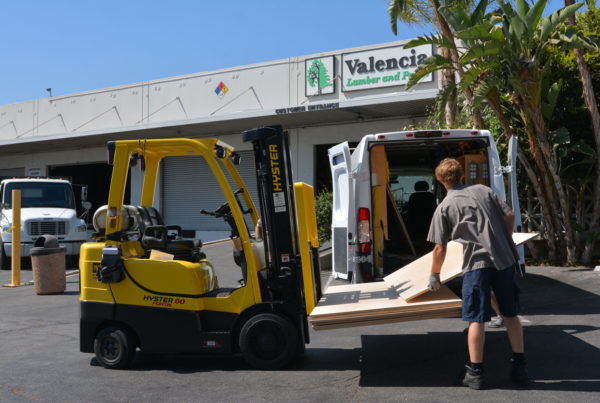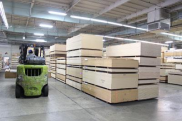Ahh, the uniquely American backyard deck: hangin’ out with friends around the grill with a tub of ice-cold brews, or lying on a chaise lounge working on your beer belly tan. And who doesn’t love scrubbing/sanding/bleaching/ staining, prying up rotten or warped boards in the hot sun, or tweezing splinters out of the kids’ feet. Sign me up!!
There’s gotta be an easier way
We agree, you can’t beat the beauty and honesty of a real-wood deck. But when composites made their appearance in the late 90’s, homeowners ignored the high price tag and limited selection (from gray to gray) and opted for “set it and forget it”. Scrub it occasionally, hose it down, and light the charcoal. And that was before it got really good.
Since then, competition and technology have driven improvements in the product and expanded the color palette. A vast array of wood tones that never turn gray, matching fascia and railing, integrated lighting. Longer warranty periods. The composite market exploded: about $7 billion in 2019 in the U.S. alone.
AND AT NO ADDITIONAL COST…THE ENVIRONMENT WINS, TOO!
Most composites are made from waste: sawdust, shopping bags, and used plastic milk jugs. Trex®, the largest (and first) of the composite makers, keeps 400 million pounds of polyethylene and waste wood out of the ocean and out of landfills every year. Their products are 95% recycled material. 400 million pounds.
(An ironic twist: California has banned plastic grocery bags. Now Trex® is worried about a shortage of raw material. No good deed goes unpunished)
BUT IT DOESN’T FEEL LIKE REAL WOOD
No, it doesn’t. And it doesn’t look like it either. You’re missing the point: once a composite deck is installed, it just does its job and it doesn’t ask for much more than an occasional brushing. Which means you get to spend more time lying around exercising or reading great literature.
WHAT’S IN IT?
Ground up wood scrap from furniture factories or mills. Shredded plastic (polyethylene and other types) recycled or reclaimed. Mixed about half-and-half, blended with borate preservatives, pigments, and ultraviolet inhibitors. That slurry is cooked and extruded. The wood-grain is stamped onto the surface when it’s warm.
WHAT’S THE WARRANTY?
Most manufacturers offer pretty impressive warranties. Trex®, for example, offers a 25-year warranty on all of their products, and their high-end lines carry an additional limited warranty against staining and fading. Scratches usually aren’t covered (see “Cons”, below).
HOW MUCH CARE DOES IT REALLY REQUIRE?
Not much, and less than wood. A LOT less than wood. A simple scrubbing with soapy water and a soft bristle brush is usually all that’s needed. Occasionally.
NOT JUST DECK BOARDS
Railings, balusters, stair treads, posts, fascia boards: everything you need to build a complete a deck in matching or coordinated colors. Add integrated lighting and even rain-runoff catchment systems and it’s hard to mess it up.
WHAT ABOUT FIRE?
Yup, we’re Southern Californians and we know: everything burns. Don’t have to ask a fireman: everything burns. But composite decking takes a much higher temperature to combust than wood does: maybe the extra time needed to save a house. Most composites meet California’s strict Wildland-Urban Interface Building Code. Many are AAA-rated for flame spread.
THE PROS OF COMPOSITES
LESS MAINTENANCE
Let’s face it, that’s the ticket right there. No more bleaching and staining or sanding every two years. There’s a chart somewhere that tells us you recoup the higher up-front cost by eliminating the cost of the stain and bleach. Nobody cares; they want their time back.
LONG LIFE
Termites don’t eat composite decking, and the stuff doesn’t rot. It doesn’t warp, it doesn’t split, it doesn’t cup or bow (if you put it down properly). It can’t splinter, so you can fearlessly walk barefoot on it (although, see “Cons” again).
LITTLE FADING
Mr. Sun is undefeated. Anyone that says composites don’t fade is full of… well, they’re mistaken. All composites fade slightly in the first few months, especially in Sunny Southern California. But then the fading stops and it holds its color. Wood is going to turn gray. Not maybe. It is going to turn gray (yes, if you scrub/sand/seal it continuously, it won’t. Which happens… never.)
LONGER BOARDS
Up to 20 feet and longer. Fewer end joints, less scrap when you’re building, reduced labor…
HIGH RECYCLED CONTENT
A 500-square-foot Trex® deck contains 140,000 plastic bags. (We assume other composites are comparable). That doesn’t include other plastics and reused wood fiber.
THE CONS OF COMPOSITES
HIGH UP-FRONT COST
On the low end of the price scale, composites will price out about 30% above a pressure-treated pine deck. Composites on the high end of the price scale run about the same as Ipe (ee-pay´), a tropical hardwood popular for decking. Compared to high-grade Burmese Teak, composite decking might be a bargain.
SCRATCHES AND SCUFFS
Sliding patio furniture, doggie claws, high heels, and shoes with embedded gravel will scratch and scrape composites. And you can’t sand it out like wood. (The good news: light scratches usually blend in over time).
STAINING
The newer products are far more stain-resistant than the old composite deck materials, but the potential is there.
IT’S HOT
Dark materials and the hot sun. Duh. Just like hardwood and softwood decks that are stained dark colors, dark composites get hot under a baking sun. It’s good that the manufacturers offer light shades to make them more barefoot-friendly.
IT DOESN’T REALLY LOOK LIKE WOOD
Didn’t we already talk about this? Wood doesn’t look like composite decking, either. Ice cream doesn’t look like a BLT sandwich.
Visit our hardwood store today for your composite decking needs!




